Watch Level Table Live for a conversation with Tara Emory, Special Counsel at Covington & Burling, who took an unconventional path from antitrust law to AI-driven legal tech. A leader in eDiscovery, AI governance, and data compliance, Tara sits down with us to share why she pivoted from traditional law, key AI trends affecting the industry, her recent Sedona Conference article on how Generative AI is reshaping Technology-Assisted Review (TAR), and more.
Level Table Live – Beyond the Bar: Tara Emory’s Journey from Antirust Law to AI & eDiscovery
- Data or Fear: What Drives Your Decisions?
- What Drives You to Meet a Challenge?
- COVID-19 Spurs Growth for ALSPs
- Time for Change: Using After-Action Reviews to Evolve and Grow
- How ALSPs Stack up Against the Big Four
- Proactive Strategies Will Determine the Post-Pandemic Winners in eDiscovery Battles
- Before You Fleet That Tweet: The Newest eDiscovery and Privacy Risk Direct From the Twitterverse
- eDiscovery Day: Has the Per-Gigabyte Pricing Model for eDiscovery Lost Its Usefulness?
- Six Changes The Legal Industry Should Prepare For
- Adding Value to the Bottom and Top Line: Legal Buyers Have an Important Role to Play in Compliance
- Nine Tips for a Successful Review Project Training
- The Pitfalls of Commingling Personal Devices, Corporate Data, and Private Lives
- Linking Data Privacy to Antitrust Regulations Will Drive Increased Workloads for Legal Practitioners in 2022
- eDiscovery: The Intersection of Transactional and Relational
- Seven Ways to Ease the Pain of Second Request Responses
- Navigating Second Requests in Cross-Border Antitrust Merger Reviews
- Bigger is Not Always Better
- The Story of One Person’s Wayfinding in the Competitive, Driven World of Legal
- Twelve Timely eDiscovery Tips From the Alex Jones Case
- The True Cost of Managed Review: It’s Not What You Think
- Should Doc Reviewers Consider a Career in Cybersecurity? Short Answer: Yes
- Who’s Afraid of ESG?
- Cut Four Hidden Costs With an eDiscovery ‘Dream Team’
- December 7 Webinar: Why Culture Matters for Women in eDiscovery
- Private Eyes (Clap Clap) Are Watching You: Preparing for the Rise of Internal Investigations
- Who’s Yo Data? Identifying Sources Is Only the Beginning of Litigation Preparedness
- The Ultimate eDiscovery Glossary
- Best Foot Forward: How Document Reviewers Can Create Successful Resumes
- Boosting Wellness: The Critical Role of Workplace Culture
- Clear as Mud: a Call for Transparency in Litigation Funding


